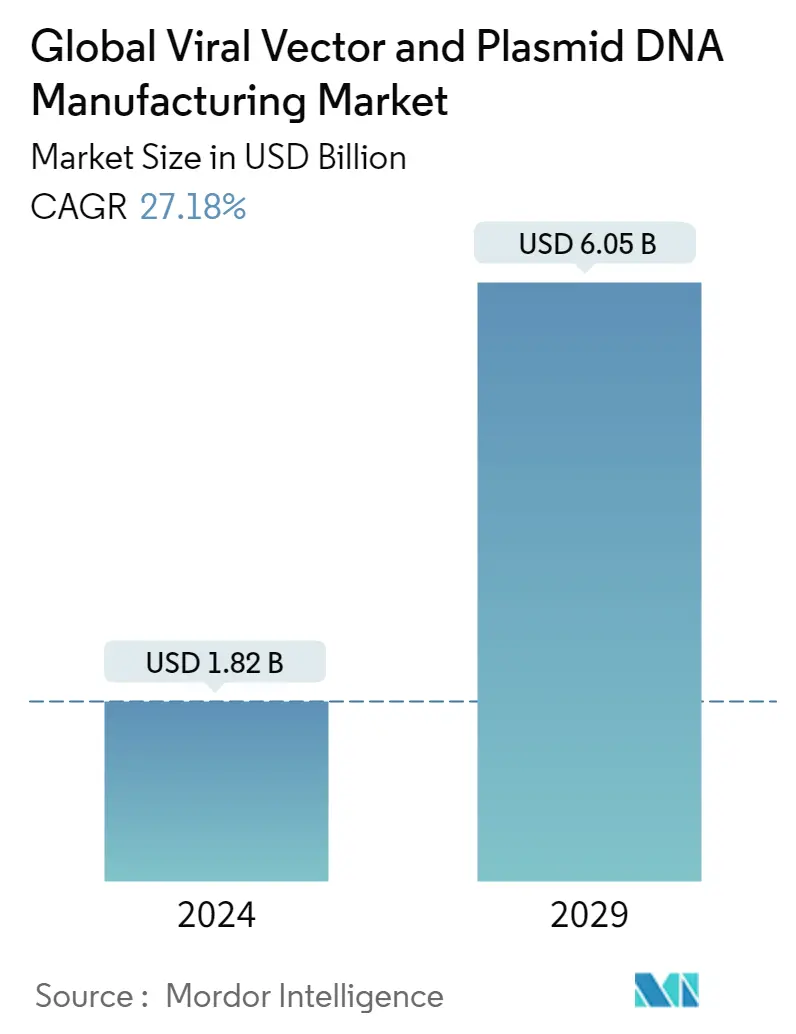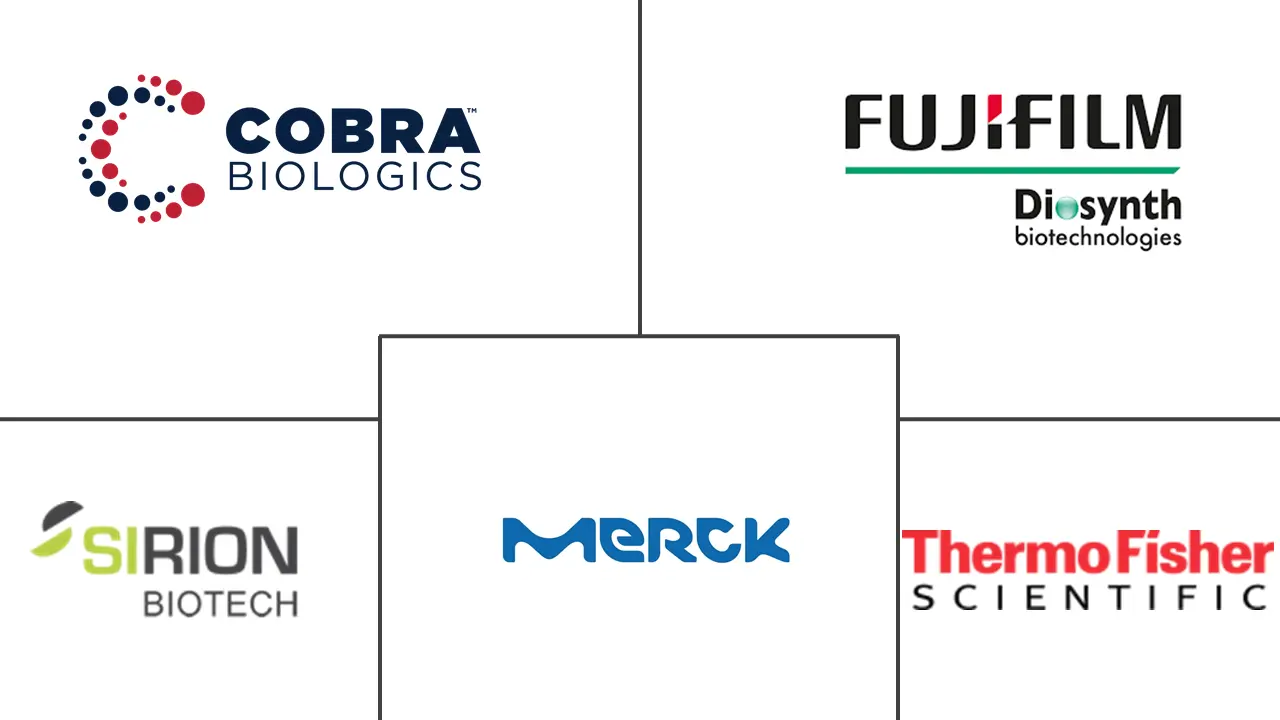Market Size of Global Viral Vector and Plasmid DNA Manufacturing Industry

| Study Period | 2019 - 2029 |
| Market Size (2024) | USD 1.82 Billion |
| Market Size (2029) | USD 6.05 Billion |
| CAGR (2024 - 2029) | 27.18 % |
| Fastest Growing Market | Asia Pacific |
| Largest Market | North America |
Major Players
*Disclaimer: Major Players sorted in no particular order |
Need a report that reflects how COVID-19 has impacted this market and its growth?
Viral Vector & Plasmid DNA Manufacturing Market Analysis
The Global Viral Vector and Plasmid DNA Manufacturing Market size is estimated at USD 1.82 billion in 2024, and is expected to reach USD 6.05 billion by 2029, growing at a CAGR of 27.18% during the forecast period (2024-2029).
The COVID-19 outbreak is expected to positively impact the viral vector and plasmid DNA manufacturing market. Several COVID-19 vaccine candidates entering clinical trials also include viral vector vaccines. These vaccines are likely to be among the COVID-19 vaccines authorized for use worldwide. Many of them have also received or are in the final stages of receiving approval. In January 2021, Johnson & Johnson announced favorable efficacy and safety data from its Phase 3 ENSEMBLE clinical trial using its AdVac vaccine platform for COVID-19. Its single-dose COVID-19 vaccine, currently under development at its Janssen Pharmaceutical Companies, met all preconditions and targets. The AdVac viral vector technology could provide a potent and long-lasting humoral and cellular immune response to the body. Another viral vector-based vaccine, which has received several approvals, is the Oxford-AstraZeneca COVID-19 vaccine. The vaccine was first discovered in November 2020 and has since been mass-produced to vaccinate people. The COVID-19 viral vector vaccines are under development worldwide using non-replicating viral vectors. The immune response of these vaccines follows a similar pattern, i.e., it includes antibody-producing B cells and T cells, which seek out and destroy infected cells in the body, providing long-lasting immunity. Further research and increased investment in this field are expected to positively affect vaccine development.
Demand for plasmid DNA is growing steadily due to growth in gene therapy development. pDNA is a prerequisite for producing AAV (adeno-associated virus), lentivirus, and other viral vector platforms. There is also an increase in several genetic disorders and numerous life-threatening disorders, especially heart diseases, AIDS, cystic fibrosis, and age-related disorders. For instance, as per the Centers for Disease Control and Prevention, 2021, hypertension, or high blood pressure, is a leading risk factor for cardiovascular disease and causes an estimated 10 million deaths worldwide each year. These statistics represent 35% of global deaths. Gene therapy with viral vectors provides a complete cure to patients suffering from genetic disorders and other life-threatening disorders rather than ease symptoms with other treatments. Several clinical studies are being conducted on viral vectors and plasmid DNA manufacturing, emphasizing the potential of gene therapy to address important medical needs.
Several players, including pharmaceutical companies, contract manufacturing organizations, research institutes, and non-profit organizations, are playing a critical role in the development and production of these vectors. In April 2021, ViroCell Biologics, the UK clinical trial-focused viral vector manufacturer, launched its viral vectors. Through this launch, the company will supply viral vectors and gene-modified cells to academic and corporate clients for translational cell and gene therapies going into clinical trials.
